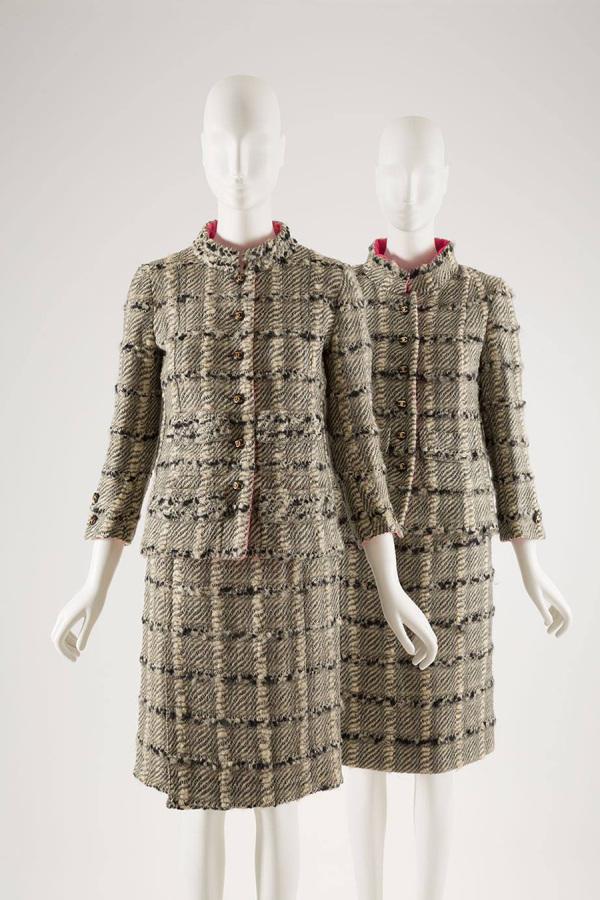FIT explores fraudulent fashion
This Chanel suit can be found in Faking it: Originals, Copies, & Counterfeits.
December 3, 2014
The Museum at FIT opened its exhibition “Faking it: Originals, Copies, and Counterfeits,”on Dec. 2, reminding the world that a $10 Louis Vuitton handbag is an oxymoron worth buying on a tight budget. The exhibit retells the legal — and illegal — history of fashion counterfeiting throughout a compilation of a hundred items collected over the last 150 years. It blurs the lines of copyright theft in a debate that has lasted for decades, proving that if a multimillion-dollar brand like Zara can steal a Cèline dress and make one or two changes to sell it on the market, counterfeiting is not going to go away any time soon.
Just past the entrance of the exhibit are two three-piece Chanel suits on display. At first glance, they seem almost identical. The dimensions of the suits are perfect, the classic tweed designs are the same colors and buttons emblazoned with the Chanel emblem are sewn across the front of the suits. But the differences are quickly pointed out in a slideshow in the exhibit.
Whereas the real Chanel suit was hand-sewn with fell stitches and crafted with the highest quality materials, the fake was machine-stitched and clumsily made with cheap materials. Even the metal from the buttons wore off its color on the fake suit over time. But those pieces pale in comparison to what else is on display. Steps away from the exhibit’s centerpiece is an entire corridor of dresses and accessories with fakes to match.
The entire exhibit presents itself in chronological order. Dating back to the 19th century, diamond-encrusted shoes and tortoise shell combs eventually leads to modern pieces, such as a jewel-emblazoned facsimile of René Magritte’s “Son of Man” stitched onto a sweater. A white dress printed with cans of Campbell soup precedes the leather remains of a few dozen designer handbags.
The dangerous line between parody and blatant counterfeit is crossed with Brian Lichtenberg’s “Homies” ensemble and the near trademark infringement lawsuit of Yohji Yamamoto’s “YY” logo. Visitors are shown a world where labels are not afraid to steal and copy successful designs for financial gain, which drives the appeal of many dresses on exhibit.
The world of fashion is also a world that counterfeits or copies the designs of expensive clothes to make them affordable. As shown on the wall of the museum, an American client once asked early fashion pioneer Paul Poiret if “a woman whose budget is not limitless hopes to be elegant,” and Poiret answered by giving an ensemble of his designs at an affordable cost.
But even Poiret’s dresses were mass counterfeited by the millions, and many other designers have had their pieces copied and sold on the market. Some will go to extensive lengths to prevent this from happening, while others see it as a way to advertise their brands. In the words of Coco Chanel, also painted on the museum wall, “If more are copied, so much the better. Ideas are made to be communicated.” Either way, the exhibit successfully raises these questions with an eye-opening display of designer creations and non-designer steals.
A version of this article appeared in the Dec. 3, 2014 print edition. Email Sangjun Bae at [email protected].
























































































































































